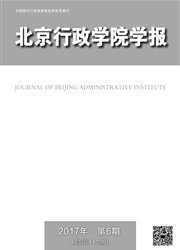

 中文摘要:
中文摘要:
巨灾与灾后可持续恢复是当前灾害研究的两个热点议题,且二者之间有着紧密的关联。在巨灾的情境下,社区互助模式难以适用,灾后恢复更依赖于外部援助,灾后可持续发展的问题更为凸显。中国政府在2008年"汶川地震"之后启动的"对口支援"为巨灾的可持续恢复提供了新的实践模式,也为从理论上总结中国灾害管理实践如何贡献于全球知识的多样性提供了丰富的养料。本文以长期的田野调查为资料,以可持续恢复为概念框架,分析了中国"汶川地震"灾后恢复"对口支援"政策的长期效果,将"对口支援"作为促进巨灾可持续恢复的新的政策路径,识别了"对口支援"中的组织结构与网络特征,分析了"对口支援"网络结构中多元主体的互动对可持续恢复目标的影响,倡导并推动对"汶川地震"灾后恢复"对口支援"的理论总结。
 英文摘要:
英文摘要:
With a close relation, catastrophes and sustainable recovery are both focusing issues in disaster research. In catastrophes, mutual help at the community level may not be applicable, and disaster recovery mainly relies on external assistances, highlighting the importance of sustainable recovery. In the aftermath of the Wenchuan Earthquake in 2008, China's distinguished paired-assistance policy demonstrates a new approach in achieving sustainable recovery, as well as contributes to diversity of disaster management knowledge in theory. Based on long-term observations and by employing the theoretical framework of sustainable recovery, this paper analyzes the long-term effect of the paired-assistance policy, identifies the interactions among diverse participants in the stakeholder networks, explains their effects on the goal of sustainable recovery and advocates more researches on the paired-assistance policy in theory.
 同期刊论文项目
同期刊论文项目
 同项目期刊论文
同项目期刊论文
 期刊信息
期刊信息
